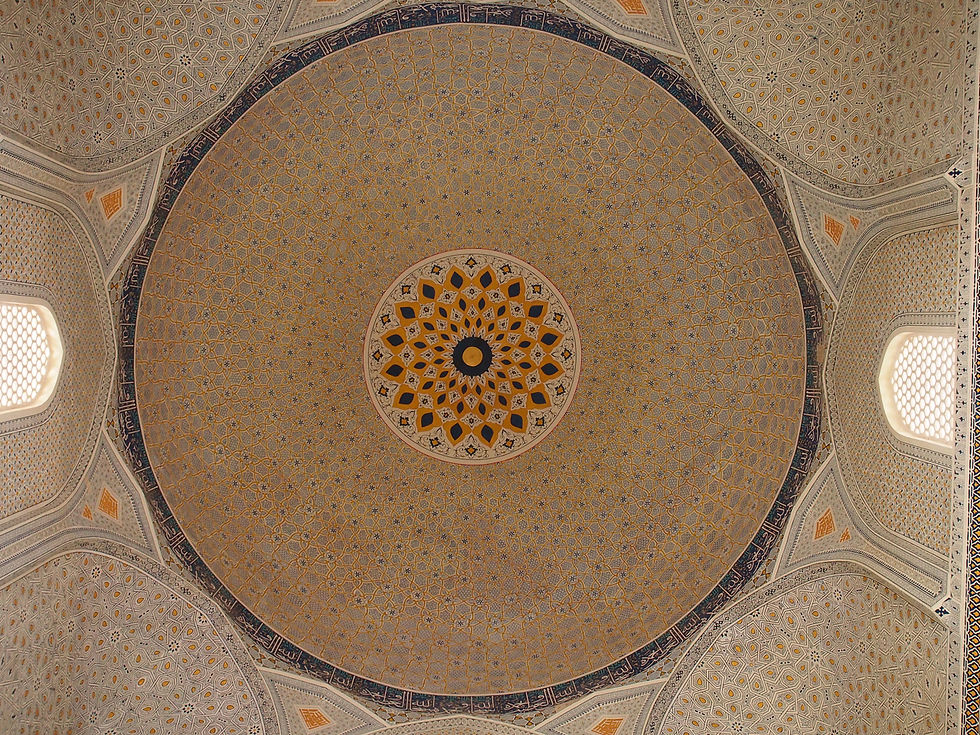(17) Along the Silk Road in Uzbekistan
- David Rodgers
- Apr 9, 2019
- 3 min read
Escaping the last vestiges of the Pamiri winter, a group of us traveled to balmy Uzbekistan for Spring break. There were six of us - all UCA faculty, all guys - who shared friendship, culture, and a bit of adventure throughout the week.
Driving via taxi from Dushanbe to the border, we first stopped to visit a 4500 year old archeological site called Sarazm that records a prolonged history of ceramic and metal trading throughout western Asia. After walking across the border (where Americans are a somewhat novel occurrence) we arrived in Samarkand, checked into our hostel, and got our first view of the incredible architecture that's been restored to its original splendor. At its height in the 1300s, Samarkand was an Islamic center with influential schools, poets, philosophers, astronomers, and rulers. Lots of trading, lots of wealth, and lots of of awe-inspiring buildings. Over the next couple of days we wandered through mosques and mausoleums, sharing the views and tourist shops with scads of visitors from central Asia. At night (in fact, every single night) we ate shaslik (barbecued lamb or beef) and then dropped by a nightclub for a drink. Shades of my youth....
From Samarkand we traveled by taxi southwest to Bokhara, another former city-state and trading center along the Silk Road. More subtle than Samarkand, Bokhara especially appealed to me - the monuments were more dispersed and hidden, more shops seemed locally owned and operated, and the tourists seemed more relaxed. By now our gang was displaying a fair amount of brotherly love, such that four decided to move onward while the others spent extra time touring Bokhara. That gave me time to buy a Turkmen rug and other quality souvenirs, which I will treasure for years to come.
From Bokhara eastward to Tashkent is a 9 hour drive. Or a 9-hour overnight ride on a 60-year old Soviet sleeper train. Couldn't pass up that opportunity. Packed - a few businessmen, lots of mothers and grandmothers and kids, and a fair number of young adults. I managed a few hours of sleep in an upper berth, with my legs sticking too far out into the aisle. In the morning, experienced travelers filled their teapots with boiling water from special spigots in each car, which seemed particularly civilized to me.
Arriving mid-morning in Tashkent, we caught up with one of our gang (the others had started back to Dushanbe) and, following the advice of our taxi driver, headed to the central bazaar for lunch and shopping. Tashkent is a large city (2 mil people) and doesn't particularly cater to tourists like us, instead serving as a modern international commercial and industrial center. 24 hours was enough and we headed back to Dushanbe the next day, the long drive ameliorated by rugged mountains and a market-day visit to Khujand in northern Tajikistan.
Uzbekistan was the perfect break from an arduous winter in the Pamirs. Especially with the help of my colleagues who provided laughter and spontaneity throughout. It was their translation services that allowed us to negotiate with the taxi drivers, ask for directions, get settled in hostels, and order shashlik every night. I would return to Samarkand and Bokhara for a second time, perhaps traveling to outlying villages as well, if any of them would join. Now refreshed, I'm anxious to experience springtime in the Pamirs.
















Comments